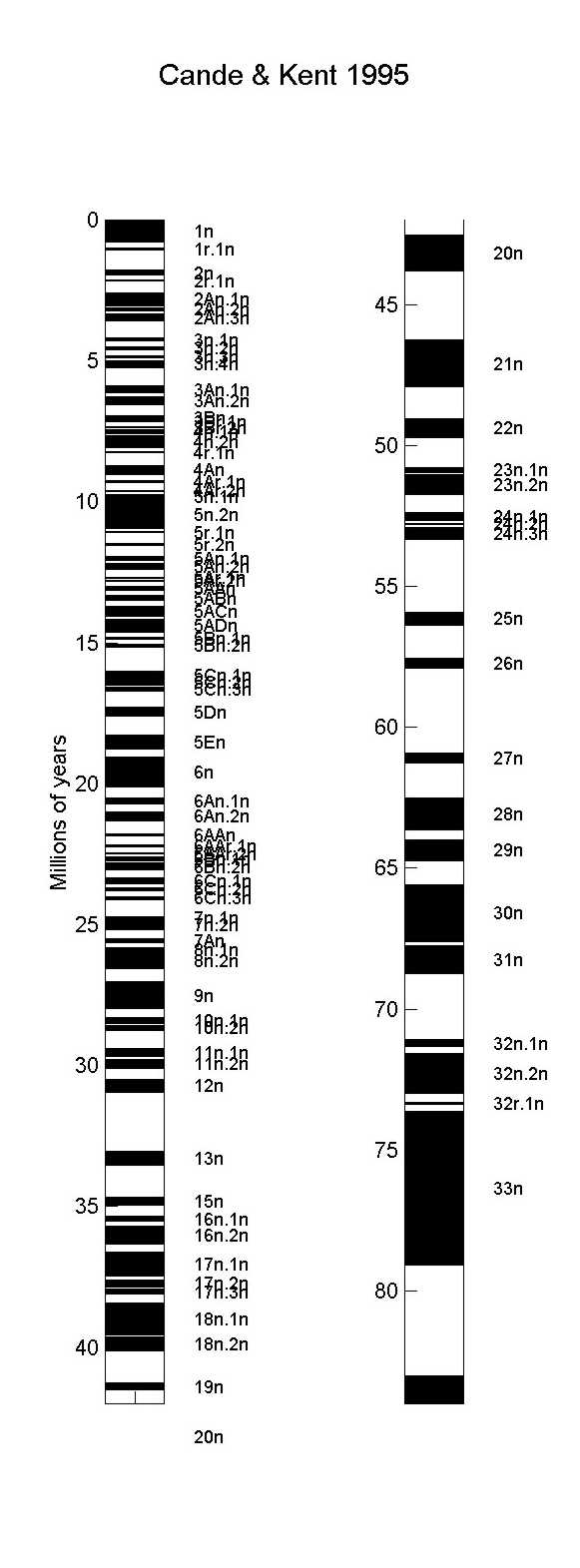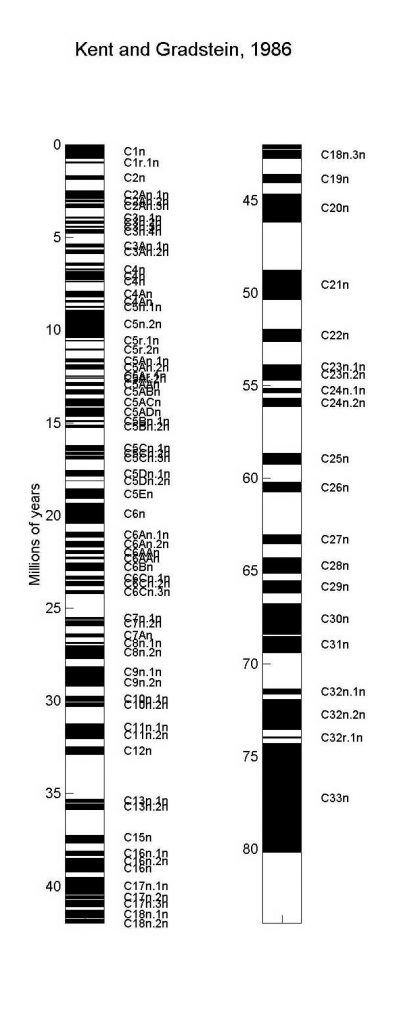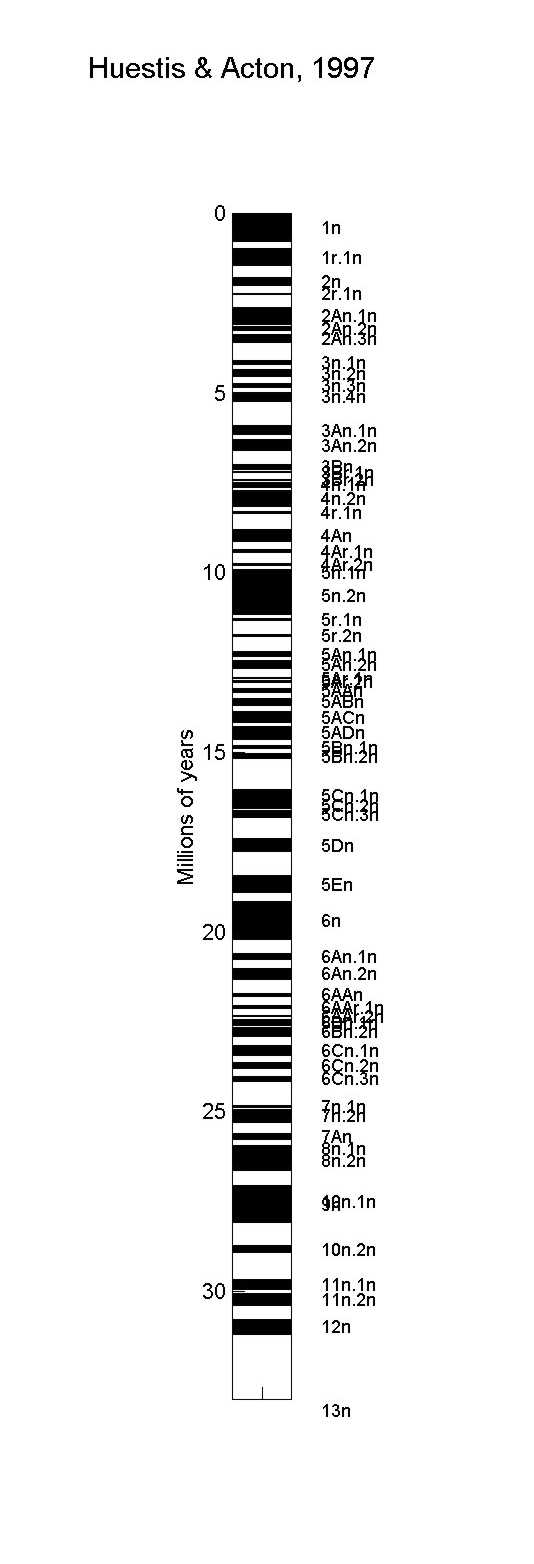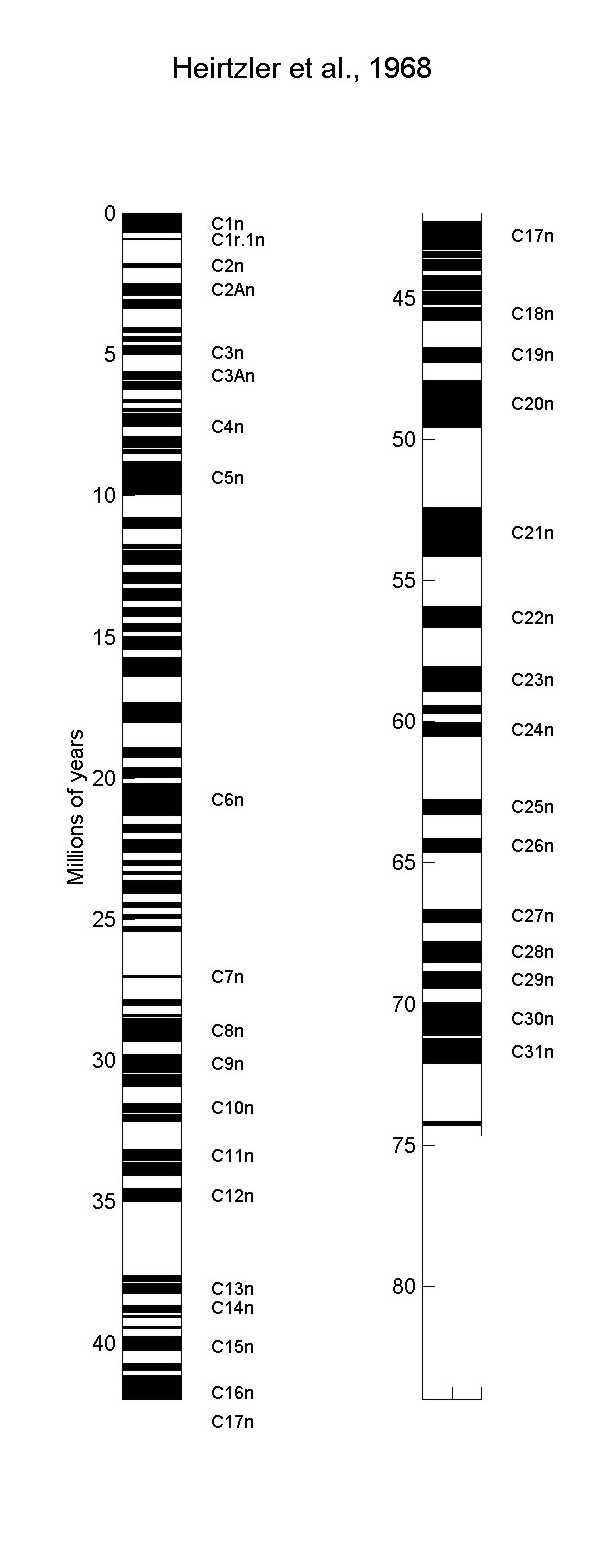The Geomagnetic Polarity Time Scale (GPTS)
The Geomagnetic Polarity Time Scale (GPTS) has been constructed from an analysis of magnetic anomalies measured over the ocean basins and tying these anomalies to known and dated magnetic polarity reversals found on land. In general, positive anomalies represent periods when Earth's magnetic field was pointing north as it is today, while negative anomalies represent periods in Earth's history when Earth's magnetic field pointed to the south pole. The first marine magnetic anomaly based timescale was constructed by Jim Heirtzler and colleagues in 1968. Most recently the timescale has been tuned or adjusted for Earth's orbital variations and climatic response as measured in marine sediment records. The presently accepted timescale that is in most widespread use is the Cande and Kent 1995 timescale. The present timescale extends back to approximately 155 million years with potential extension in age to about 175 million years (Jurassic age) from the oldest ocean crust in the world (Click here to see my research into Jurassic-aged ocean crust). Shown below are figures of some timescales plus some ascii files with the age of the chrons.
References
- Cande, S.C. and D.V. Kent, Revised calibration of the geomagnetic polarity timescale for the late Cretaceous and Cenozoic: Table of ages for Cande and Kent GPTS J. Geophys. Res., 100, 6,093-6,095, 1995
- Kent, D.V., and F. M. Gradstein,A Jurassic to recent chronology: Table of ages for Kent and Gradstein GPTS 1986 The Geology of North America, vol. M, Geological Soc. of America, pp45-50, 1986.
- Huestis, S.P. and G.D. Acton, On the construction of geomagnetic timescales from non-prejudical treatment of magnetic anomaly data from multiple ridges: Table of ages for Huestis and Acton GPTS Geophys. J. Int., 129, 176-182, 1997.
- Heirtzler, J. R., Dickson, G. O., Herron, E. M., Pittman III, W. C., and LePichon, X., Marine magnetic anomalies, geomagnetic field reversals, and motions of the ocean floor and continents: Table of ages for Heirtzler et al. GPTS J. Geophys. Res., 73, 2119-2136, 1968.



